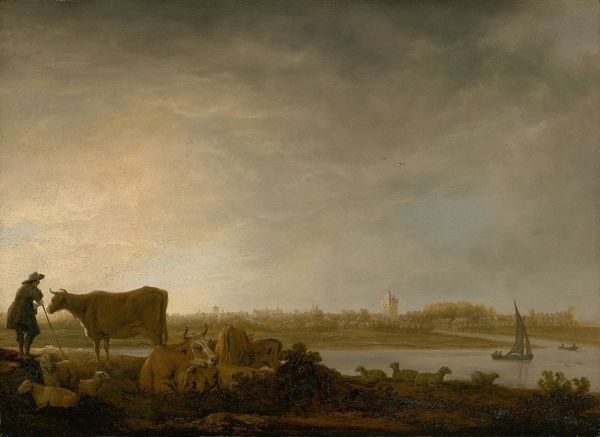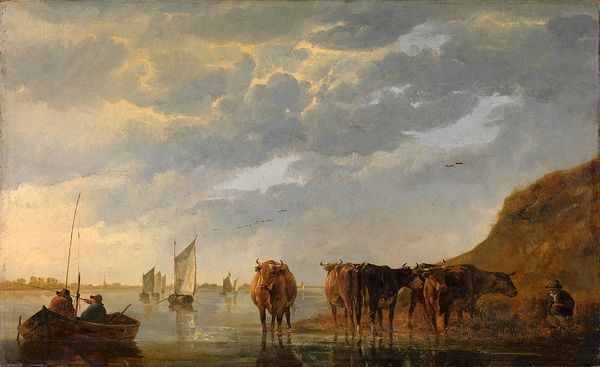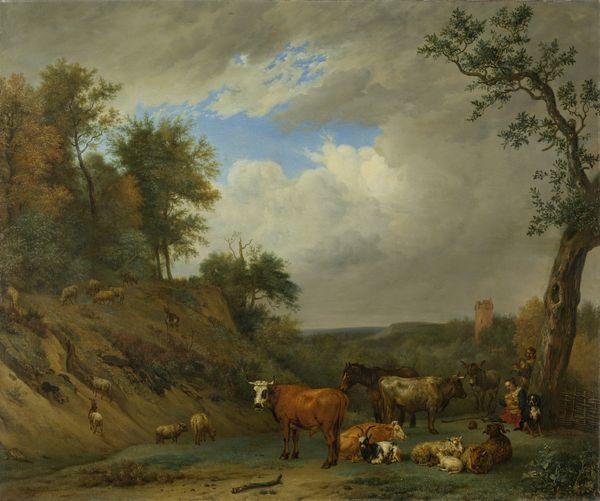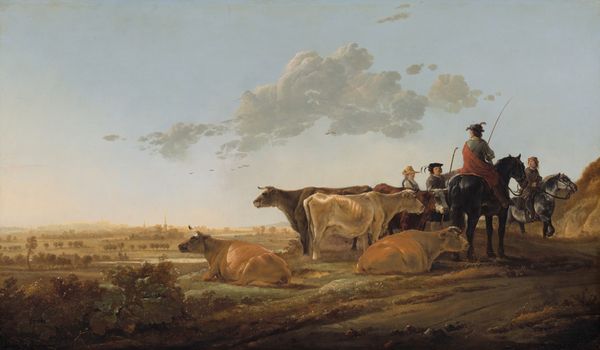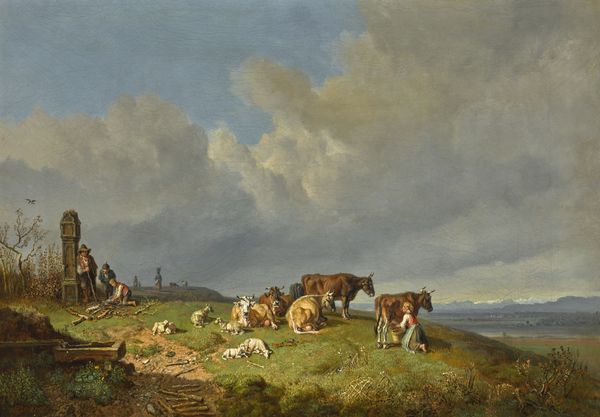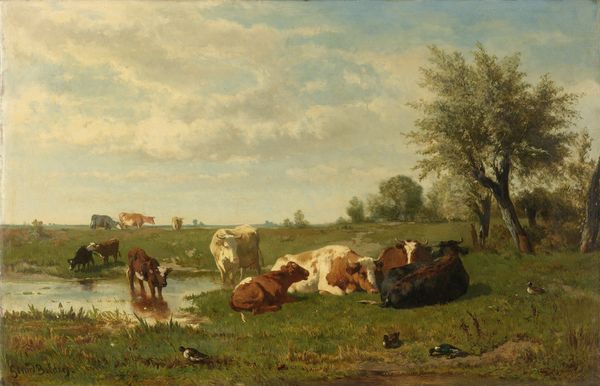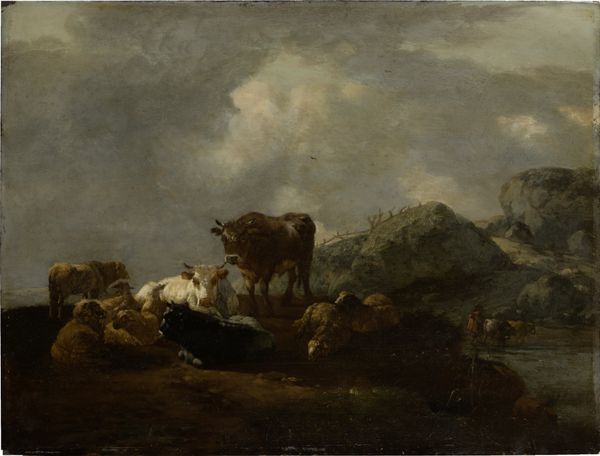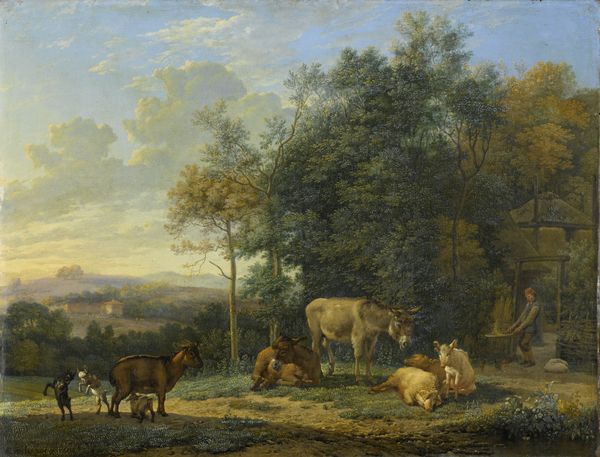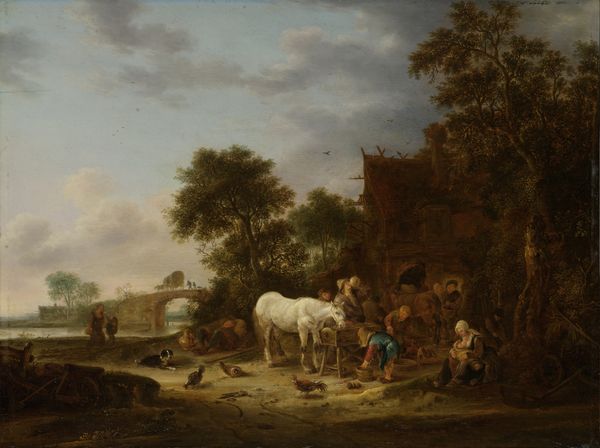
painting, oil-paint
#
baroque
#
animal
#
dutch-golden-age
#
painting
#
oil-paint
#
landscape
#
oil painting
#
genre-painting
#
realism
Copyright: Public Domain: Artvee
Aelbert Cuyp created this painting of cattle near the Maas River using oil on canvas. In this period, painting wasn't just a high art, but a trade, involving the careful layering of pigments to capture light, texture, and form. The materiality here is crucial. Oil paint, a relatively new medium at the time, allowed for a richness and luminosity, bringing a sense of palpable presence to the scene. Cuyp's skill lies in how he uses the paint’s inherent qualities to evoke the scene's tranquility, from the soft, diffused light on the water to the weighty presence of the cattle. Look at how the brushwork models the animal's forms, giving them a lifelike presence through subtle gradations of tone and color. But let’s also consider what the painting represents. The prosperity of the Dutch Golden Age was built on trade and agriculture, with cattle farming playing a key role. Cuyp, therefore, isn't just painting a pretty picture; he's capturing a moment in the economic life of the Netherlands. The painting elevates the everyday, turning labor into art. It reminds us that even the most seemingly simple image is rooted in material, making, and broader social context.
Comments
No comments
Be the first to comment and join the conversation on the ultimate creative platform.
